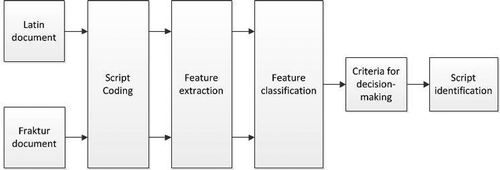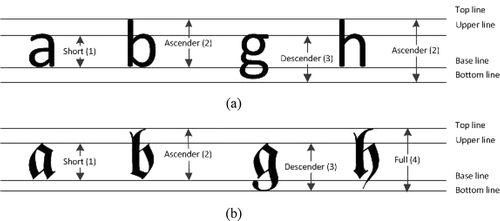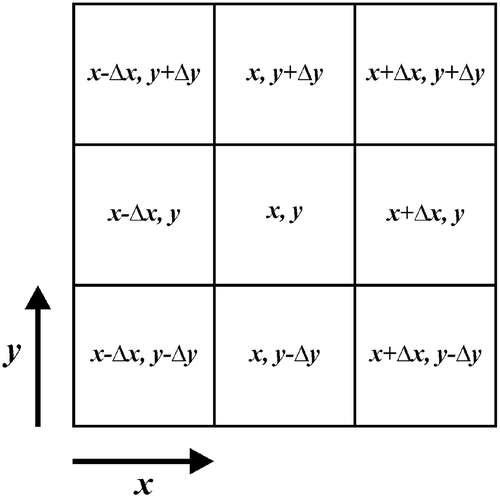Figures & data
Table 1. Coding of German alphabets.
Table 2. Coding of German diacritics.
Figure 3. German text: (a) Latin script, (b) Latin text coding, (c) Latin coded text, (d) Fraktur script, (e) Fraktur text coding, (f) Fraktur coded text.
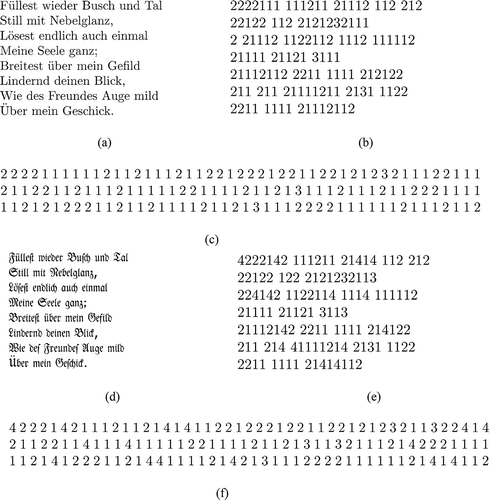
Figure 5. Statistical analysis of the text: (a) normalized GLCM for Latin script, (b) normalized GLCM for Fraktur script.

Table 3. Comparison of the first-order texture descriptors between Latin and Fraktur scripts.
Table 4. Comparison of the second-order texture descriptors between Latin and Fraktur scripts.
Table 5. Comparison of the first-order texture descriptors between Latin and Fraktur scripts extracted from training part of the database.
Figure 6. First order texture descriptors obtained from Latin and Fraktur scripts extracted from training part of database: (a) mean μx, (b) mean μy, (c) standard deviation σx, and (d) standard deviation σy.
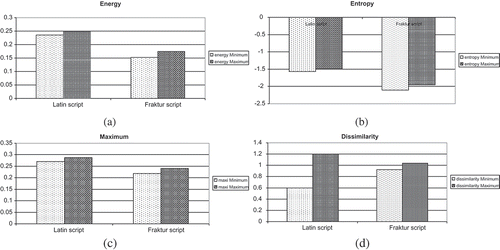
Table 6. The second--order texture descriptors obtained from the training part of the database written in Latin and Fraktur scripts.
Figure 7. Second-order texture descriptors obtained from Latin and Fraktur scripts extracted from training part of the database: (a) energy, (b) entropy, (c) maximum, (d) dissimilarity, (e) contrast, (f) inverse difference moment, (g) homogeneity, and (h) correlation.
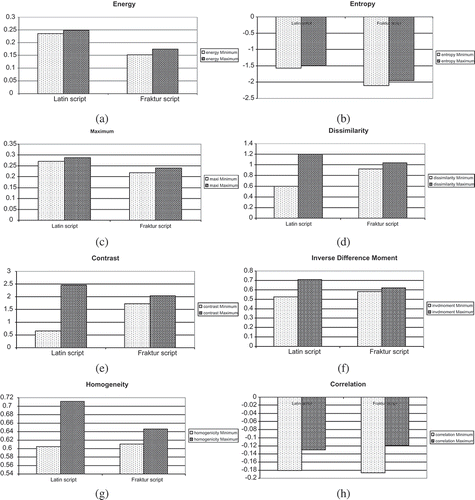
Table 7. Comparison of the first-order texture descriptors between Latin and Fraktur scripts extracted from the test part of the database.
Table 8. The second-order texture descriptors obtained from the test part of the database written in Latin and Fraktur scripts.
Table 9. Comparison of GA-ICDA on the training set (102 samples) with two other unsupervised classifiers (k-means and SOM).
Table 10. Comparison of GA-ICDA on the test set (18 samples) with two other supervised classifiers.

